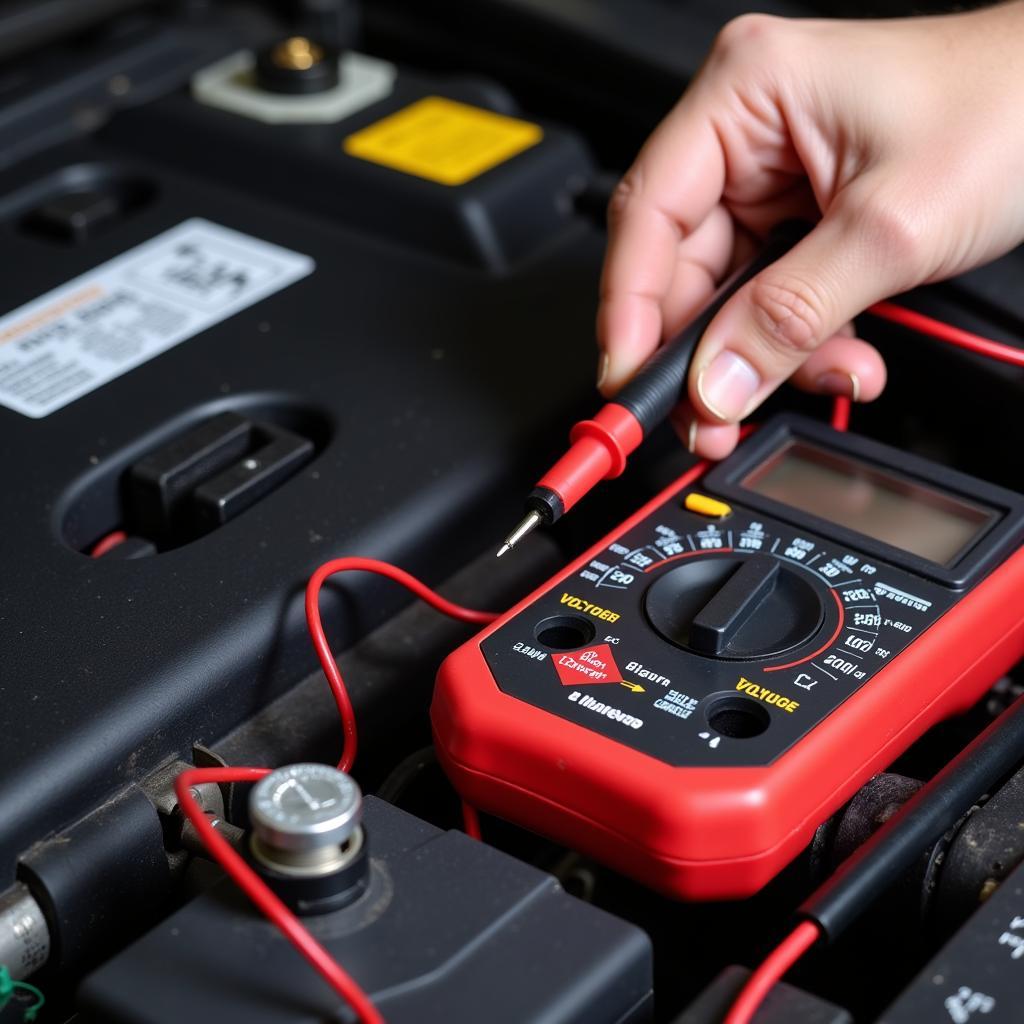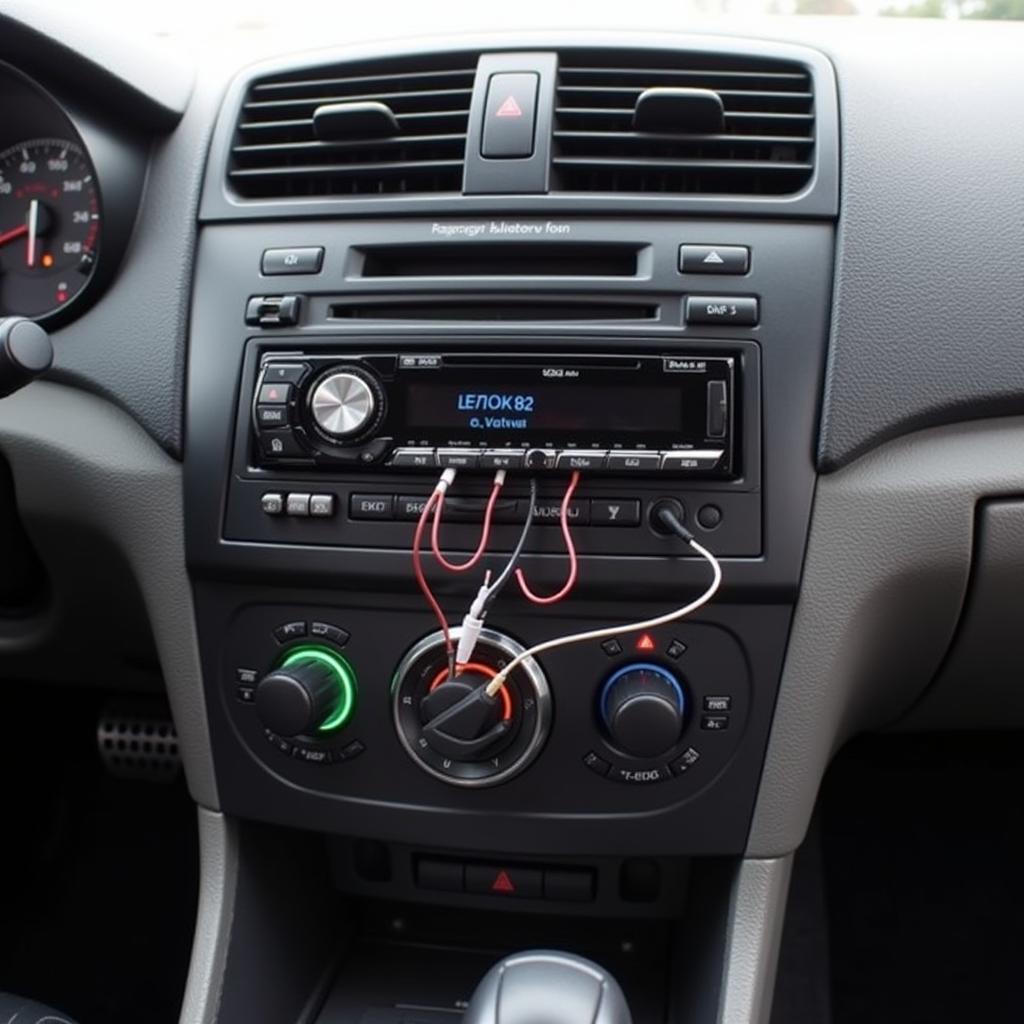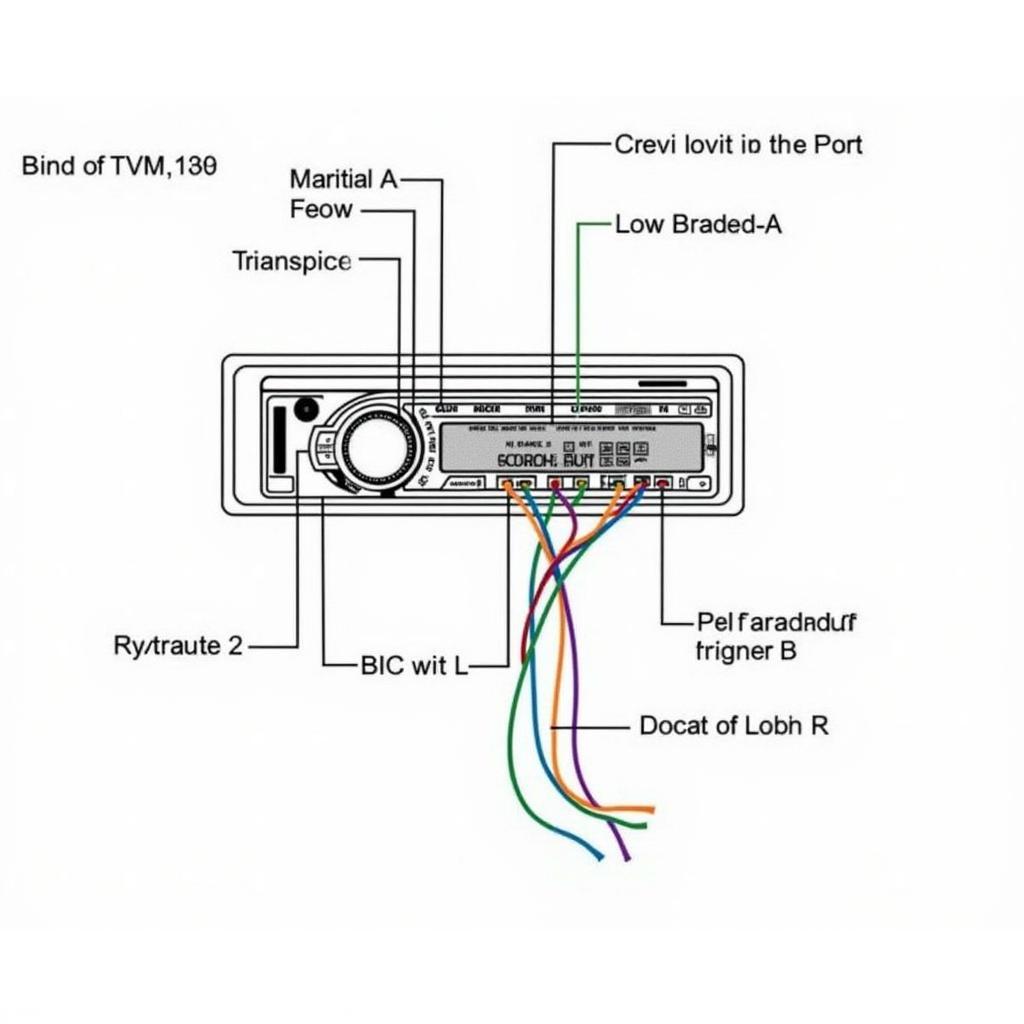Weak battery voltage can be a frustrating and recurring issue for car owners. In the first 50 words of this article, we’ll delve into the common causes of weak battery voltage and offer practical solutions to get your car back on the road quickly and safely.
Understanding Weak Battery Voltage
A car battery is the heart of the electrical system, providing the power needed to start the engine and run various electronic components. When the battery voltage drops below a certain threshold, usually around 12.4 volts with the engine off, it’s considered weak. This can lead to a range of problems, from difficulty starting the engine to malfunctioning electronics.
 Testing Car Battery Voltage with Multimeter
Testing Car Battery Voltage with Multimeter
Common Causes of Weak Battery Voltage
Several factors can contribute to a weak battery, including:
- Old Age: Car batteries have a limited lifespan, typically between 3 and 5 years. As they age, their ability to hold a charge diminishes.
- Parasitic Drain: Even when the car is off, certain electrical components can continue to draw power, slowly draining the battery. This can be caused by faulty wiring, malfunctioning devices, or even leaving interior lights on. For more on parasitic drain, check out some tips regarding truck battery draining.
- Extreme Temperatures: Both extreme heat and cold can negatively affect battery performance. Hot weather can accelerate the chemical reactions within the battery, leading to faster degradation, while cold temperatures can reduce its capacity to hold a charge.
- Corrosion: Corrosion on the battery terminals can impede the flow of current, leading to a weak voltage reading.
- Alternator Issues: The alternator is responsible for recharging the battery while the engine is running. A faulty alternator can prevent the battery from receiving a full charge. Overheating battery terminals can also be a sign of a problem; read more on what causes battery terminal overheating.
Diagnosing Weak Battery Voltage
Diagnosing a weak battery often involves a few key steps:
- Visual Inspection: Check the battery terminals for corrosion or loose connections.
- Voltage Test: Use a multimeter to measure the battery voltage with the engine off. A reading below 12.4 volts indicates a weak battery.
- Load Test: A load test can help determine the battery’s ability to hold a charge under stress.
- Alternator Test: Check the alternator’s output voltage to ensure it’s functioning correctly.
Solutions for Weak Battery Voltage
Depending on the cause of the weak voltage, several solutions can be employed:
- Battery Replacement: If the battery is old or failing, replacement is the most effective solution.
- Parasitic Drain Repair: Identify and repair any sources of parasitic drain to prevent the battery from discharging unnecessarily.
- Terminal Cleaning: Cleaning corroded terminals can improve the flow of current and restore proper voltage. You might want to check the battery size nissan key fob if you are dealing with key fob battery issues as well.
- Alternator Repair or Replacement: A faulty alternator needs to be repaired or replaced to ensure the battery is adequately charged.
“A common misconception is that a weak battery will always lead to a no-start condition. In reality, a weak battery can manifest in various ways, from dimming headlights to sluggish power windows,” says John Smith, Senior Automotive Electrical Engineer at AutoTech Solutions.
Preventing Weak Battery Voltage
Taking proactive steps can help prevent weak battery voltage in the future:
- Regular Battery Maintenance: Regularly cleaning the terminals and checking the electrolyte levels (in conventional batteries) can help extend the battery’s lifespan.
- Limit Short Trips: Short trips don’t allow the alternator enough time to fully recharge the battery, so try to consolidate errands or take longer drives whenever possible.
- Turn Off Accessories: Ensure all lights and accessories are turned off when the car is parked to minimize parasitic drain. If you’re experiencing a “hot brake” warning, it’s important to understand what it means and address it promptly. Find out more about what is hot brake warning.
“Preventive maintenance is key to a healthy battery. Just like any other component of your car, regular checks and care can significantly extend its lifespan and save you from unexpected breakdowns,” adds Jane Doe, Lead Technician at CarCare Experts.
Conclusion
Weak battery voltage can be a sign of underlying problems within your vehicle’s electrical system. Addressing the issue promptly is crucial to avoid further complications. By understanding the causes, symptoms, and solutions discussed above, you can effectively troubleshoot and resolve weak battery voltage issues, ensuring your car starts reliably every time. Remember to perform regular maintenance and consider professional help when necessary to keep your battery in optimal condition.
FAQ
- How often should I replace my car battery? Most car batteries last between 3 and 5 years, but it’s best to check your owner’s manual for specific recommendations.
- Can a weak battery cause damage to other car components? Yes, a chronically weak battery can strain the alternator and other electrical components.
- Is it safe to jump start a car with a weak battery? Yes, it’s generally safe, but it’s important to follow the correct procedure to avoid any hazards.
- How can I tell if my alternator is bad? A common sign of a bad alternator is a battery that constantly needs to be jumped or recharged.
- What is a parasitic drain? A parasitic drain is a constant draw of power from the battery even when the car is off.
- Can extreme temperatures affect battery life? Yes, both extreme heat and cold can shorten the lifespan of a car battery.
- How can I prevent battery corrosion? Keeping the battery terminals clean and applying a protective coating can help prevent corrosion.



